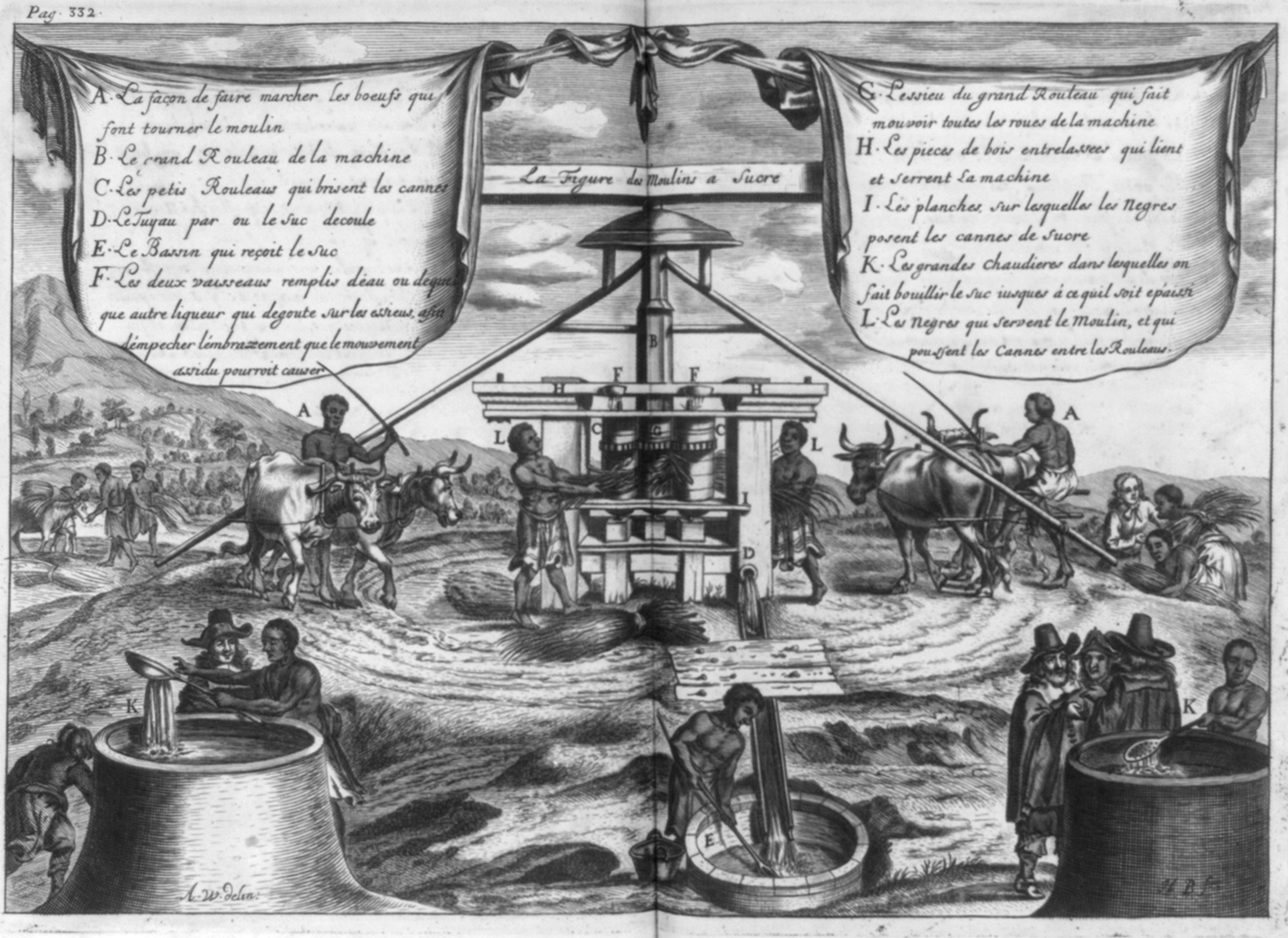This text is part of the Teaching Hard History Text Library and aligns with Key Concepts 4 and 6.

(Translated from French to English)
A. How they make the oxen that turn the mill walk.
B. The big wheel of the machine.
C. The little wheel that breaks the canes.
D. The tube through which the sugar runs.
E. The barrel that receives the sugar.
F. The two vessels full of water or some other liquid that drops onto the canes to keep the constant turning of the machine from causing a fire.
G. The axle for the big wheel that turns all the wheels in the machine.
H. The interlaced pieces of wood that contain the machine and grip it tightly.
I. The planks on which the Negroes place the sugar canes.
K. The large cauldron in which the sugar is boiled until it thickens.
L. The Negroes who tend the mill, and who put the canes between the rollers.